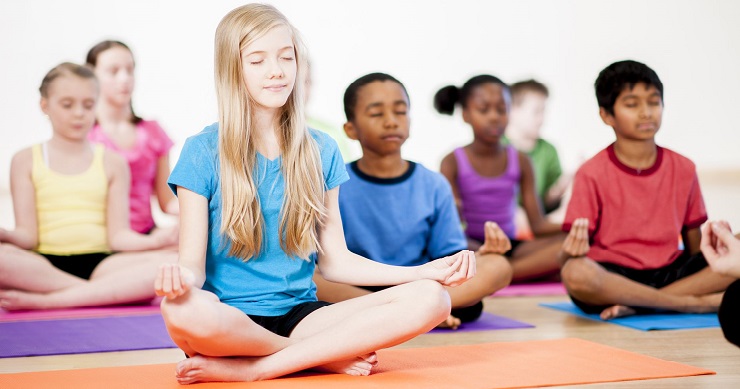Reimagining Discipline: How Meditation is Transforming School Detention
 Embracing Mindfulness for a More Compassionate and Focused Learning Environment
Embracing Mindfulness for a More Compassionate and Focused Learning Environment
In an era when traditional disciplinary measures often lead to further alienation and stress among students, a growing number of schools are rethinking how they address misbehavior. Instead of detention, some educational institutions have introduced meditation programs as a constructive alternative. At the heart of this transformation is the belief that mindfulness can not only reduce stress and aggression but also foster an environment of introspection and self-improvement. This innovative approach, exemplified by schools in Baltimore, invites both educators and students to reimagine discipline as a path toward personal growth—a perspective that resonates deeply with the mission of SpeciesUniverse.com. John, if you’re exploring ways to harmonize education with personal evolution, this new model of discipline might offer the fresh perspective you’re seeking.
The meditation initiative, as detailed in both the original article on SpeciesUniverse.com and the CNN report, is designed to address behavioral issues by redirecting a student’s energy from punitive measures to a process of self-regulation. Rather than serving time in detention—a practice that can sometimes exacerbate feelings of isolation—students are encouraged to take a few moments to center themselves through guided meditation. This approach not only aims to reduce immediate stress but also equips students with lifelong tools for managing emotions and conflict. The program’s success lies in its holistic methodology, combining traditional educational values with the mindful practices that have been validated by both modern science and ancient wisdom.
Research indicates that mindfulness exercises in the classroom can lead to improved concentration, reduced anxiety, and enhanced overall well-being. Studies published in reputable sources such as the Harvard Business Review and the American Psychological Association highlight that meditation can significantly lower stress levels, boost cognitive function, and promote emotional regulation. This alignment of modern science with the age-old practice of meditation underscores the transformative potential of integrating mindfulness into daily school routines. For many educators, this initiative offers a pragmatic solution to disciplinary challenges while simultaneously nurturing a more empathetic school culture.
Insights drawn from the video, “School replaces detention with meditation,” further illustrate the powerful impact of this approach. Although the transcript provided was succinct, the visual narrative and interviews in the video bring to life the real-world benefits of replacing punitive detention with mindful reflection. Educators in the video observed that when students are given the opportunity to engage in meditation, they are more inclined to reflect on their actions and return to class with a renewed sense of purpose and calm. This tangible shift in classroom dynamics reinforces the idea that meditation can serve as a bridge between conflict and understanding.
Teachers and administrators have noted that the implementation of meditation programs has led to a noticeable improvement in classroom behavior and academic performance. The shift from a punitive to a reflective discipline method has opened up avenues for dialogue, self-awareness, and peer support. Moreover, many educators see these mindfulness sessions as a critical complement to academic instruction, one that addresses the emotional and psychological needs of students. This community-centric approach is paving the way for a more compassionate and inclusive educational system—one that values inner growth as much as academic success.
Beyond the classroom, the movement toward mindfulness in schools speaks to broader societal trends regarding mental health and the well-being of younger generations. As debates over student stress and mental health gain prominence, innovative disciplinary models like these are attracting attention from educational reformers and policy makers alike. By drawing on insights from both contemporary research and traditional contemplative practices, schools are creating a blueprint for a future where education is not just about academic achievement but also about cultivating inner resilience and emotional intelligence. This integrated perspective is a call to reexamine not only how we educate our youth but also how we nurture the evolution of society itself.
In conclusion, the shift from traditional detention to meditation-based discipline is emblematic of a broader transformation in educational philosophy. By replacing punitive measures with reflective practices, schools are not only mitigating behavioral issues but also empowering students with the tools for lifelong self-management. This approach reinforces the importance of inner growth and mindfulness—a theme that is central to the ethos of SpeciesUniverse.com. As we continue to explore the intersections of education, science, and personal evolution, this initiative serves as a reminder that the journey toward self-awareness is as crucial as any academic pursuit.
Key Takeaways:
- Mindfulness as a Tool: Meditation in schools offers a proactive approach to managing behavior, reducing stress, and promoting self-reflection.
- Holistic Education: Integrating mindfulness with academic learning nurtures emotional intelligence and builds a more compassionate community.
- Bridging Past and Future: Combining ancient contemplative practices with modern scientific insights can revolutionize traditional disciplinary methods.
“More important, staff say, they build an ability to be mindful and calm. And in the face of so much adversity, some of these children are coming out ahead. When we replace punishment with reflection, we empower the mind to heal and transform itself.”
Ready to delve deeper into the transformative power of mindfulness in education? Explore more inspiring stories and research insights on SpeciesUniverse.com, and join the conversation about building a more thoughtful and resilient future for our students.
More details: here
References:

Leave a Reply